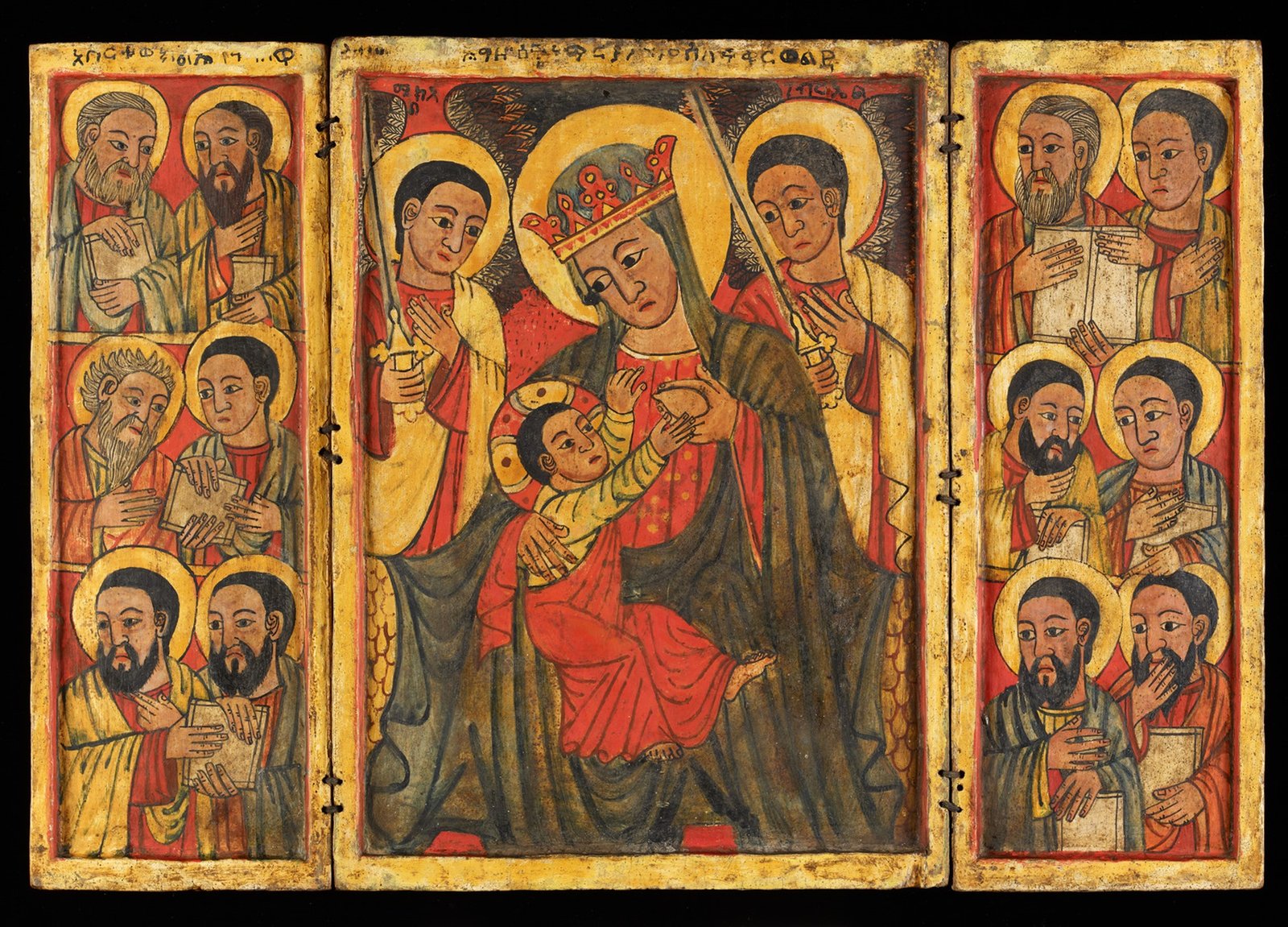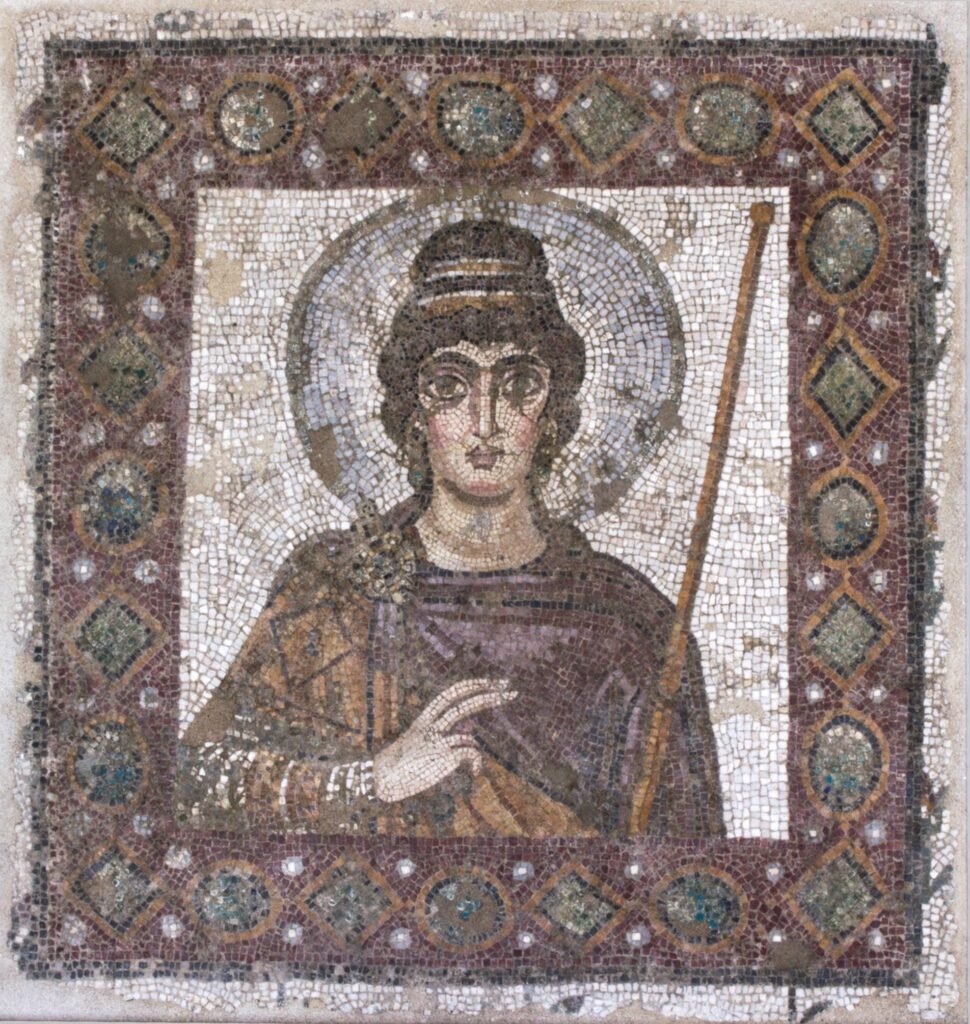
Julius Caesar was dead for nearly 400 years when Constantine the Great, who tradition says saw a flaming cross in the sky and then converted the greatest empire the world had ever seen to what had been an eccentric Jewish sect, chose in 330 of the common era an ancient city — today, Istanbul — to be Nova Roma, or New Rome.
For more than a millennium, until it was conquered by Sultan Mehmed II of the Ottoman Empire in 1453, Constantinople would be the capital city of what would be come to be called the Byzantine Empire, a Greek-speaking imperium that saw itself as the heir of the legacy of Augustus, Trajan, and Hadrian. At its height, it stretched to Cordoba from the cataracts of the Nile.
“Africa & Byzantium,” through Sunday at the Metropolitan Museum of Art, brings to Manhattan nearly 200 works of Byzantine art and culture in North and East Africa, the majority of which were created between the fourth and 15th centuries of the common era. Here is evident the early spread of a new faith, and its idiosyncratic styles in the lands that today comprise Tunisia, Egypt, Sudan, and Ethiopia. Simplicity and decadence come to a détente.
The show traces an arc that extends even past the Ottoman conquest, finding the legacy — and faith — of Byzantium alive in later Ethiopian and Coptic artists, down to the present day. Here, too, are mosaics of menorahs and a lulav and etrog, and dedicatory inscriptions from the the Ben Ezra Synagogue at Fustat, now Cairo. From medieval Nubia comes a haunting “Virgin Hodegeteria,” called in the West “Our Lady of the Way.”
“Mosaic Panel With Preparations for a Feast,” from the second century, delivers an atmosphere of hustle and bustle. Preparations are afoot, and tasks await completion. Here is anticipated the turn toward ordinary people doing ordinary things that is a hallmark of the modern but that is already underway at antiquity’s tail end. More regal is the “Mosaic With the ‘Lady of Carthage,’” where the erstwhile Phoencian colony finds magnificent incarnation.

Byzantium was a place of astonishing syncretism, captured here on the small, ivory-hewn “Box With Isis-Tyche-Aphrodite and Dionysis-Serapis.” Dating from the Fourth Century or Fifth Century, the rendering comprises deities from the Greek, Roman, and Egyptian pantheon. A crown of feathers and cow’s horns conjures a figure venerated by long-dead pharaohs. “Panel with Painted Images of Isis” merges that goddess with images of the Bible’s Mary.
“Mosaic with Menorah” is remarkably well- preserved, an arresting image of the seven pronged variety found at Solomon’s Temple at Jerusalem rather than the eight branched versions that shine at Jewish homes every winter. A “Mosaic of Date Palm,” from current day Tunisia, is another shorthand for the Solomonic, as the Bible relates how images of those plants were carved into the Temple walls. Today, whatever Jews who remain there still look to Israel.
From the 10th century, “Wall Painting With Bishop Petros Protected by Saint Peter,” from what is now Sudan, offers an astonishing juxtaposition of the bearded Apostle — believe to have been the first Pope — with his namesake, a then contemporary figure, marked by darker skin color. The intimacy of the two figures telegraphs a faith-fused world where saints stand just over the shoulder of the faithful, and names are loaned from the martyrs.

Hand of God,’ Probably Constantinople, second half of 6th century
C.E. The Holy Monastery of Saint Catherine, Sinai. Via Metropolitan Museum of Art.
Today there is a new emperor — or, say, sultan, Recep Tayyip Erdoğan — who sits where Constantine, Justinian, Suleiman, and Mustafa Kemal Atatürk once governed. The great Byzantine mosque of Hagia Sophia is now a grand mosque. Israel is an enemy, and an aggressive strand of Islam, a betrayal of Turkey’s reborn charter, is ascendent. Byzantium sought a new Rome on the Bosphorus. Today, its ruins remind of conquests yet to come.





